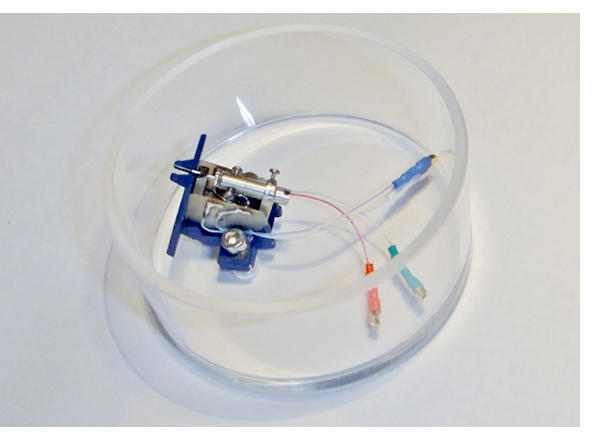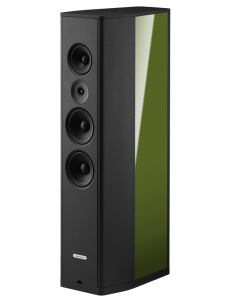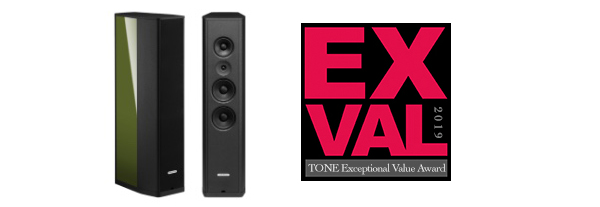ANA Mighty Sound
Of all the perils analog enthusiasts are faced with, the worst is breaking the cantilever on a precious cartridge.
Ask any audiophile with more than few cartridges, many of them will tell you that it is not a matter of if, but a matter when. If you handle tonearms and cartridges long enough, sooner or later you are bound to break a cartridge, hopefully it will be a Denon 103 and not a Clearaudio Goldfinger.
Thankfully, there are a few cartridge rebuilders on both side of the continent, and I have had the misfortune of trying a few that provide less than exemplary work. However, François Saint-Gérand of Ana Mighty Sound is one of the (if not THE) best cartridge rebuilders in the world today. Here’s a bit of what he had to tell me.
TA: When did you start Ana Mighty Sound?
FSG: I was encouraged by Thomas Schick, designer of the Schick Tonearm and personal friend, to start Cala Mighty Sound in 2012. In 2015, Xavier Delacoux joined out team together with Laszlo Szalai and Vencel Szabo. Christian Bianchi (founder of Prisme Audio in the eighties) who develops and build our Le Phono SE phono stage, also came on board.
We were originally called Cala Mighty Sound, “Cala” (Calamean) means beauty in ancient Greek, and it was also my DJ name. But the French pronunciation (spelled Calamine) basically means the dirt in a motor, and the name was also registered by another company so we decided to call ourselves Ana Mighty instead. It is referenced to my beloved wife and of course by extension to analog.
What is your background?
I have a Ph.D in speech recognition and its impact on speech theories and other linguistic fields. I’ve also taught Linguistics, Speech Theories, and Communication at the University level.
Who is in your cartridge rebuilding team?
László Szalai, chief engineer and László Vencel Szabó, his apprentice. László has worked in different audio studios (Hungarian Broadcasting Studio, Hungaroton Records, Archive of the Institute for Musicology of the Hungarian Academy of Sciences Research Center) as an audio and broadcast engineer. He made hundreds acoustic music recordings and is of course obsessed with excellent sound and HiFi. Vencel is his apprentice and assistant.
Can you tell me a bit about how the rebuilding/repair business in general?
Rebuilding cartridges involves extensive scientific research and field experience. We work with our suppliers and customers to offer dedicated and coherent solutions to our customers.
Rebuilding is actually more difficult than building a new cartridge, you have to completely unmount the cartridge and coils, with no manual or guidance. Working on a Neumann DST, for instance, is a very good example. In lieu of the manual, you must understand its construction and to feel it in your hands in order to get the best results.This is where the extensive experience of Laszlo Szalai is crucial.
Our extensive hands on experience with cartridge building gives us an unparalleled advantage on understanding the entire cartridge manufacturing and rebuilding process. Very few people have seen the inside of as many cartridges as we have.
What are the common problems you see?
The most common problems are the broken stylus tips, snapped cantilevers, or general wear and tear over time
Specifically, what can be repaired, and what cannot? What makes you different than other cartridge builders?
We can replace broken cantilevers, rebuild coils from scratch, change dampers, and retip the stylus. Very few people on earth can do all of these, especially rewinding coils, but we can. All rebuilds must meet four basic requirements:
– Repair a cartridge only if it is less than replacement cost.
– The cartridge body must be able to be opened without causing damage.
– Here is what makes us different. Cartridges are best repaired by not adding weight on the moving mass assembly of the cartridge. This is why we do not repair cartridges which have no cantilever shaft (like Audio-Technica and Benz cartridges). Our competitors will insert a larger aluminium tube extend the broken cantilever with glue, rather than rebuilding with a new cantilever. This produces a much larger effective mass of the moving ensemble, resulting in a lower resonance frequency for the coil mechanism, with negative repercussions in the audible range. We feel a cantilever should never be extended, but replaced.
– We cannot repair cartridges which can only be replaced by original parts.(for example AT, FR-7), which are often unobtainable.
What if you use parts different than original?
We have sources for almost all cartridge parts, and in some cases, we custom make our own components which exceeds the performance of original parts. For example, modern suspensions can be better than 30 year-old components. Small variations in parts can have a huge impact on sound. Sometimes even two new cartridges can have totally different sounds. Our goal is to maintain sonic integrity of the cartridge after repair.
We have used newer parts on many well-known MC cartridges (Ortofon SPU, Denon 103, EMT TSD-15, Koetsu, etc…) the results obtained (both sonically and on measured specifications) were higher than what we expected and this is when we decided that this service should benefit to our customers.
How many repairs have you done?
Ana Mighty has repaired more than 200 cartridges, but László has a solid background with hundreds and hundreds of repairs from the past 40 years.
What is involved in cartridge rebuilding?
No two cartridges are identical. A repair always starts with a cleaning and a detailed inspection of the cartridge. We have a strict policy about not altering the original aspect of the cartridge (except for our highly modified version of cartridges). Once the body is open, we are able to inform the owner about all problems found. The whole process is documented by photos.
The actual repair starts with a very detailed cleaning and finishes with setting the parameters (VTF, compliance, tracking ability, etc.) of the cartridge. At the very end we test each cartridge for 3-4 hours, play them for 24 hours and then run a new set of tests to optimize the fine parameters of the cartridge again, with measurements documented.
What are the most important cartridge components?
The sonic characteristics of a cartridge is a combination of the sum of its parts, and therefore no single component is more or less important than another. A good example of this is in the process of building coils. Very few have the capacity to rebuild coils, but we do. We can even build a coil from scratch, and at times we have to build it 5-6 times in order to have the right sound. Coils have different winding patterns; the most well-known are cross coils and square coils but we also rebuild the triangular coils unique to Neumann DST cartridges.
Do rubber dampers age over time? What is their lifespan?
Time is a big enemy of cartridges. The life of the damper is unpredictable, but temperature and humidity does play a role. If a cartridge starts to sound distorted or grainy, it is a warning sign that the damper may need to be changed.
A problematic/damaged/old damper can change the position of the cantilever causing an uneven wear of the stylus (diamond tip). This can also damage LPs over time. Due to technological advancement, we have better dampers than the original, such as our silicon frictionless dampers available in either single or double donuts as well as dual circular internal designs.
Do you see more wear and tear in coastal cities vs say inland USA?
Certainly yes, temperature (changes), humidity, change of air pressure, vicinity of seas or oceans (salty air), polluted air, altitude, etc. can have an effect on the components. Unfortunately, we don’t have any statistical data about it and it would be very hard to draw a definite answer.
Do you see uneven cartridge wear if Antiskating is set incorrectly?
Yes, and this applies to both entry-level and high-end turntables alike. Not only the stylus (diamond tip) wears unnecessarily and unevenly, but the record as well and while the cartridge can be repaired, the record unfortunately NOT.
Without a proper test record it is not possible to correctly set the anti-skating and this also affects the tracking ability of the cartridge. AnalogMagik is a tool which we use to set Anti-skaing.
The proper setting depends on the stylus pressure as well as on the stylus cut (shape/profile), also slightly on the length of the tonearm and tis dynamic capabilities. Last, but not least it also depends on the turntable settings (its proper leveling, etc.). Some people set the anti-skating by placing a glass disc on the rotating platter and set the stylus on its surface and set the anti-skating to keep the tonearm in position (avoid moving it away). However in this case the stylus is touching the surface of the glass at one point (on its tip), while on the stereo (test) record it touches with its 2 sides representing totally different frictional properties.
What causes bent or skewed cantilevers?
This is mainly caused by the aging of the damper. However, let’s not forget the damper assembly consists of not only a damper (rubber /silicon ring), but also a steel, copper or plastic string that is invisible from outside. The deformation or aging of these strings can also cause such problem. Bent cantilever can also be caused by careless stylus cleaning or by the cartridge dropping off from the side of the record.
What are some good cartridges you have seen, and why do you like them?
The following list is very subjective and is far from complete: Audio Note Japan (Kondo), Jan Allaerts, EMT, Ortofon SPU, My Sonic Lab, Accuphase, Lyra, Koetsu, Phasemation, Air Tight… For us some of the units of these manufacturers provide such musical experience since many years that we enjoy a lot. They have rather neutral sound, they have a relaxed sound, but at the same time they are very dynamic, analytical, precise and show a wide stereo soundstage. They are well designed and mechanically solid.
Is it true that Japan is the only country that can make a complete cartridge?
We don’t think so, however it is true that decades ago serious/excellent cartridges were coming mainly from Japanese manufacturers. Let’s not forget though about the before mentioned famous European brands, such as EMT, Ortofon, Audio Note UK, Benz Micro, Clearaudio, Van den Hul, Jan Allaerts, etc.
Some have claimed that Koetsu differs only by body, but the cores are the same inside?
This is definitely not true. Their models have different magnets or pole pieces, coil material can also be different, for example they use parallel wire (copper and silver) making the coil. They sort and match the components carefully, selecting the bodies to the sonic properties of the matched components. For sure this can be also valid for other manufacturers as the magnetic properties of the magnets are not always the same. The earlier Koetsu models have gained a prestigious reputation.
Is it true that only 1-2 manufacturers do all the tipping, cantilevers, and suspension in the world?
To the best of our knowledge there are only a few companies able to manufacture these, however we don’t exclude the possibility of new manufacturers entering this market.
Who are the main cartridge makers of today? Matsudaira of MSL? Nakasutka San of ZYX? Audio Technica? Who else do you know?
There are different type of builders and of these builders are important in thier own way :
– Mass market like Audio Technica and Ortofon with advanced technologies and less human process implied in the building of their products. They produce thousands of MC cartridges, and represent a very small percentage of their total sales. Of course there are some exceptions like the Audio-Technica ART-1000 (of which we are proud exclusive dealers in France) which is produced at around 200 samples per year by only person… and which is also a beautiful and technically made product. Ortofon and Audio-Technica are OEM builders too.
– Medium mass market like Excel, Benz Micro, Lyra, ZYX, MSL which also address OEM market
– Small mass market builders like : Jan Allaerts and a lot of artisan Japanese cartridges (Sumile, Top Wing, Miyajima, Fuuga, etc…)
Main cartridge maker is not the one that sells the most cartridges but the one(s) that make the cartridges you prefer. ;)
Show us some examples?
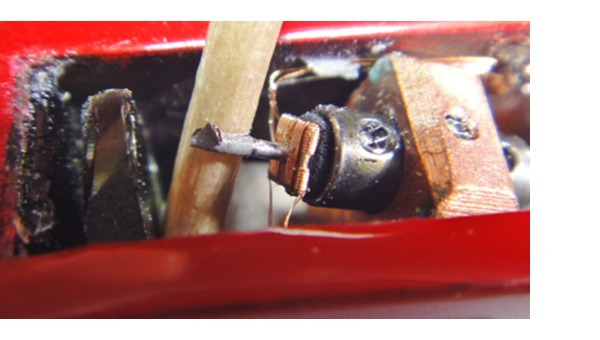 Here is a cartridge repaired by another. You have coil wires soldered together (this is something we would never do), and an aluminum cantilever attached to the end of the original cantilever, on this Koetus Urushi Vermillion.
Here is a cartridge repaired by another. You have coil wires soldered together (this is something we would never do), and an aluminum cantilever attached to the end of the original cantilever, on this Koetus Urushi Vermillion.
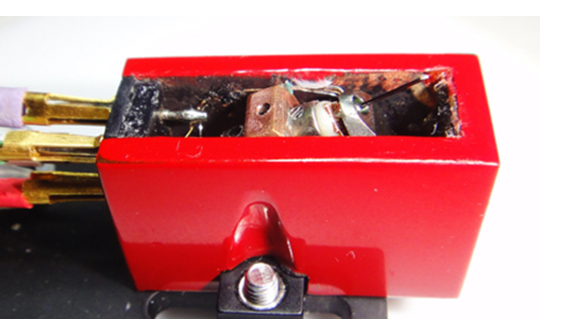 Here is what it looks like after the repairs with upgrades. We completely rebuild damper, coils and cantilever from the ground up.
Here is what it looks like after the repairs with upgrades. We completely rebuild damper, coils and cantilever from the ground up.
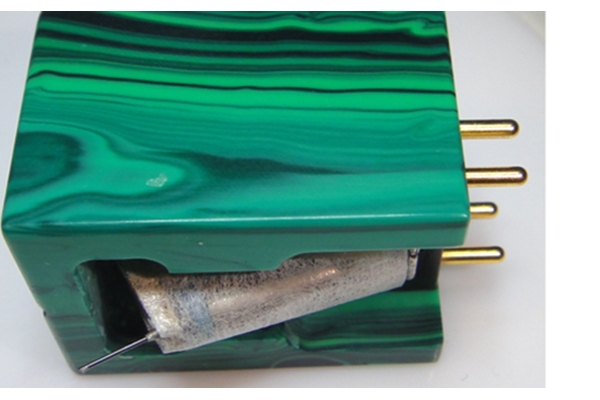 And here, we have a modified Denon 103, with one of our body, and cartridge internals.
And here, we have a modified Denon 103, with one of our body, and cartridge internals.
Closing thoughts from ANA Mighty Sound
It is important to mention that most cartridges that come to us are usually old, many of them were made many decades ago. Similar to other used equipment the aim is to repair it the closest to original condition. It is not always possible to return the cartridge to its original/brand new condition as the parts used for the repair might not be 100% the same as the originals.
With solid experience and special care most of the times it is possible to repair the cartridge very close to its original condition/sound. Many times, we received such feedback that the repaired cartridge sounded better than originally. We dare to state that in most cases changing the stylus to a modern and sharper cut as well as to change the cantilever to something more rigid improves the sound of the cartridge.
We would like to grab the opportunity and highlight here the importance of properly cleaning of the record and the cartridge’s stylus (diamond tip). If you look closely to the record and the stylus you can experience the wonder of this historical micromechanical technology. Love and respect your records, phono cartridge and all your equipment.
Closing thoughts from Richard
Does a rebuilt cartridge sounds as good as the original? The truth lies with the pudding, and Francois provided me with a rebuilt EMT TSD15N cartridge, and asked me answer the question by listening to his cartridge.
The cartridge has been rebuilt from the ground up with 12 ohm silver coils, it has a proprietary frictionless dual donut damper, a new boron cantilever with Nude Microridge S tip (the smallest diamond tip available). The rebuilding cost of the cartridge is €1800, but Anamighty does sell fully modified models for €3500.
At first I was skeptical given the cartridge looks a little weird, with wire leads coming out of the cartridge body instead of pins. But as soon as the cantilever dropped onto the LP, my jaw literally dropped!! The sound of the rebuilt TNT15 has the details of my My Sonic Lab Ultra Eminent BC, it has the dynamics of the Lyra Olympos and the transient attack of the ZYX Universe Optimum. Does it sound better the original EMT TSD 15N? I cannot answer fairly because I do not have an unmodified original for a side by side comparison. But sitting beside the some of the best cartridges in the market, this €1800 rebuilt EMT holds its own!
I give ANA Mighty Sound my highest recommendation.
www.anamightysound.com
The AudioSolutions Figaro M Speakers
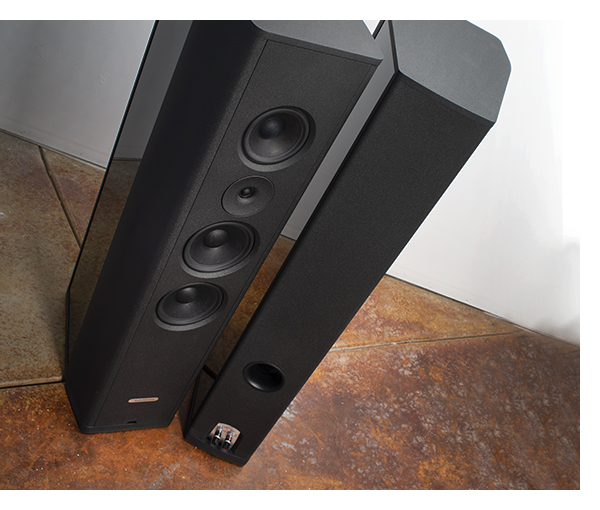 A relative newcomer on the HiFi scene, AudioSolutions comes out of the gate producing speakers that are top performers, offering tremendous value.
A relative newcomer on the HiFi scene, AudioSolutions comes out of the gate producing speakers that are top performers, offering tremendous value.
To be straight up with you, I prefer speakers more in the GamuT, Sonus faber, and Gold Note part of the spectrum. Slightly on the warm side, but still dynamic and resolving. A bit of extra tonal saturation goes a long way with me. So, that’s my bias. If you are looking for a speaker with these sonic characteristics, I can’t suggest the AudioSolutions speakers highly enough. They offer all the qualities I love in a speaker at incredibly reasonable prices. The Figaro M floorstanders you see here are $7,500/pair. Close your eyes, and you might just think you’re in Italy.
After about 50 hours of background duty, the first track up is Drab Majesty’s “Foyer.” Hardly the last word in audiophile fidelity, this track offers layers of atmospheric sounds and synthesizers, that in a lesser system, just sound flat and uninvolving. A great alternative track in the same vein is Thomas Dolby’s “I Scare Myself.” I’m sure you have your faves.
Team players
The Figaros present an easy load to drive, working equally well with tubes, solid-state or class D amplifiers, keeping their signature sound, but revealing the character of whatever they are plugged into. Mating them with the Boulder, Nagra, and Vitus amplifiers we had on hand for review, the Figaros become more dynamic overall, producing more LF extension and sock. Pass and Luxman provide a bit more warmth with tube amps from Line Magnetic and PrimaLuna even more romantic. With a rated sensitivity of 91.5db/1-watt, precious few amplifiers will be off-limits, but a few vintage amps in the queue were a bit too much of a good thing for this writer. As always, experiment, experiment, experiment to find your little slice of nirvana. The Figaros even turn in an enchanting performance with my PSAudio Sprout II. This was used in the garage after unpacking to burn them in, with a lot of metal tracks being played at a neighbor annoying level. After a weekend’s worth of parts cleaning, they were ready to move into the studio.
The front panel snaps off so you can use them with flush grilles or without – I always love to look at the drivers, so sans grille cloth I say. The flat, speckly finish covering most of the cabinet tends to diffuse the light bouncing off of the Figaros, so they are not as imposing as a pair of gloss black speakers. They are not as fussy to live with as a result.
The music lover trying to get as much sound as they possibly can for their dollar will appreciate this approach. Beautifully finished cabinets are wonderful, but they do add to the MRSP. AudioSolutions keeps the cost in check going this route. This finish is certainly easy to keep clean and fingerprint free. Half of the side panels are available in any one of 17 different colors, and you can read about that here.
Free of fatigue
Even after a long string of punk tunes, via the Pass XA200.8s (at a higher volume than is reasonable and prudent) the Figaros prove they can play loud with total control. Listening to Amyl and the Sniffers “GFY,” lead singer Amy Taylor channels Wendy O. Williams, along with a little bit of Lemmy and Yoko Ono, the Figaros are cranked to the point of pain. That’s my pain though, the speakers show no break up even at ear-splitting levels – they play loud with ease.
Going back to Yello’s “Vicious Games,” music bounces all over the place. The Figaros create a soundfield that is wide, deep, and tall. These speakers do an incredibly good job at reproducing height information along with the standard width and depth. Same thing, tracking through U2’s debut, Boy. All the tinkly bits float in space, and the Edge’s layer upon layer of processed guitars are all easily decipherable.
As you might expect from what I’ve told you so far, vocal and acoustic music is perfection on the Figaros. ABBA’s rendition of “Dancing Queen” is just as much fun as the Yayhoos remake. Yoko Ono’s vocals on “Watching the Rain” are everywhere in the sonic picture. If your musical taste is more traditional, I had an equally engaging time with Ella Fitzgerald.
AudioSolutions claims bass down to 32hz, and while we don’t measure speakers, a quick run of test tones confirms there is plenty of action at 30hz. The trick to getting the optimum setup with the Figaros (at least in my three rooms) was to get them a bit further out in the room than you might other speakers. It’s kind of like when you order shoes and a particular manufacturer runs half a size large. Get it wrong, and they sound uncharacteristically boomy – it’s not the speakers’ fault. Once you have achieved the perfect low and mid-bass balance, play some of your favorite bass-heavy tracks, and you’ll see what I mean. The Figaros deliver solid and substantial low-frequency output.
Running through a long playlist of hip-hop, EDM, and even some classic rock tracks with a lot of LF information, all but the most bass addicted end users will probably not need a subwoofer. The Figaros achieve true full range performance. Should your musical taste be strictly EDM and electronica, move the speakers slightly further towards the room corners to pick up a little bit of room/midbass gain and get the party started!
Further tech bits
The black finish is definitely slimming. The Figaros weigh 90 pounds each, so it’s up to you if you’ll need help placing them. They are well packed and easy to unpack without drama. Their footprint is small (44.1 inches tall x 10.7 inches wide and 18.5 inches deep) so they won’t overpower your listening environment.
A pair of 7.2-inch woofers, a 5-inch midrange that is run “further than the usual region” and a silk dome tweeter with a mini waveguide make for a full three-way system. Again, it’s important to note what a great job AudioSolutions have done on the crossover network and driver choices. These speakers have a coherence that you’d expect to pay 2-3 times this much for.
Even though the speckled finish is utilitarian in nature, the execution of the cabinetry is flawless, thanks to AudioSolutions “self-locking” cabinet. This is a level of detail I would expect on a $50k pair of Sonus faber speakers, but am thrilled to see in a $7,500 pair.
Adding up to excellence
We could go on and on, with this track and that, but the bottom line with the Figaros is the level of music they reveal. While $7,500/pair can bring you a considerable glimpse into the upper strata of high-end speakers, Audio Solutions delivers a masterpiece. In the context of a $10k – $100k system, they’d probably be the last thing I’d upgrade if I did at all. The only key is that if you like this “sound” as much as I do. If you’re more of a mega detail person, these may not be the droids you want. I can’t think of a speaker in the last decade that’s delivered more sonic enjoyment than the Figaro Ms do for $7,500 a pair. Hence, I am happy to give them one of our Exceptional value awards for 2019. This is a lovely pair of speakers without fault, that could easily be the last pair of speakers you buy.
$7,500/pair
Peripherals
Digital Source dCS Vivaldi One
Analog Source Luxman PD-717 w/Kiseki Purple Heart
Phono stage Luxman EQ-500
Preamplifier Pass Labs XS PRE
Amplifier Pass Labs XA200.8
Cables Tellurium Q Reference
Please note that all TONE and TONE related text and images are copyright © 2005–2024 TONE Magazine and The Audiophile Apartment. The RSS feed provided is for personal, non-commercial use only.
If you are not reading this content in your news aggregator, RSS reader, or direct, then the site you are looking at may be guilty of copyright infringement. If you locate this anywhere, please contact [email protected] so we can take action immediately.



